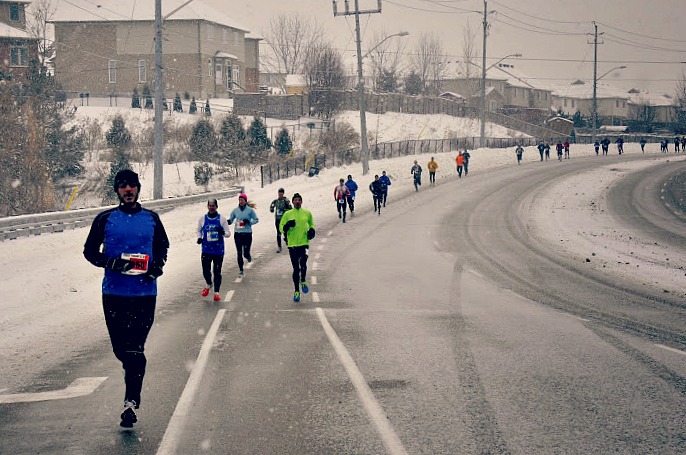For decades, research has suggested that running injuries are the result of the human body being inherently weak. Unsurprisingly, most of the literature tends to portray female runners as being more fragile than male runners as well.

The gist is, many reports caution runners that our musculoskeletal system lacks the capacity to absorb the impact peaks and transients associated with running, but what these reports fails to take into account is foot strike and footwear.
Running Injures Stem from Bad Shoes and the Wrong Foot Strike
The most severe methodological shortcoming that plagues much of the research on running injuries is that very rarely does a study consider foot strike. Because of this, associations between ‘risk factors’ such as muscle strength imbalance, gender, age, running experience, flexibility, and running injuries are misleading.
Truthfully, the best scientific evidence indicates that foot strike pattern (heel strike vs forefoot strike) — heavily influenced by footwear — is the fundamental variable that affects impact peaks and transients during running. Unfortunately, running injuries remain high because clinical interventions does not reflect this scientific understanding.
Decades of systematic reviews have been carried out to identify the main risk factors of common running injuries only to discover that the strongest predictor of these injuries are impact peaks and transients, which are associated with a heel strike landing, not a forefoot strike landing.
- Thanks to Daniel Lieberman (PhD) and Steven Robbins (MD) foot strike and footwear have been identified as predictors of the adverse reactions runners experience during running. That is, runners generate more impact when heel striking in cushioned footwear.
With that said, future research should focus on understanding the conditions that interfere with foot strike as well as perceptual responses, instead of emphasizing the ‘weakness of the human form’.
Likewise, researchers need to more adequately assess the degree to which footwear effects kinematics and biomechanics because the standard running shoe creates circumstances that prevents a runner from reaching their highest potential.
More From Run Forefoot:
- Studies on the Effects of Footwear on Running Form
- About the Author
- Perceptual Awareness Needed to Run with Less Impact
- Long Ground Contact Time: Big Problem for Heel Runners
- The Right Shoes for Forefoot Striking
Bretta Riches
BSc Neurobiology; MSc Biomechanics candidate, ultra minimalist runner & founder of RunForefoot. I was a heel striker, always injured. I was inspired by the great Tirunesh Dibaba to try forefoot running. Now, I'm injury free. This is why I launched Run Forefoot, to advocate the health & performance benefits of forefoot running and to raise awareness on the dangers of heel striking, because the world needs to know.
Latest posts by Bretta Riches (see all)
- Can You Run In Barefoot Shoes? Yes, But DON’T Heel Strike! - 21/07/2024
- Why Cushioned Running Shoes Are Really Bad for Your Feet - 19/07/2024
- Do Cushioned Running Shoes Cause Injuries? - 17/07/2024

Leave a Reply